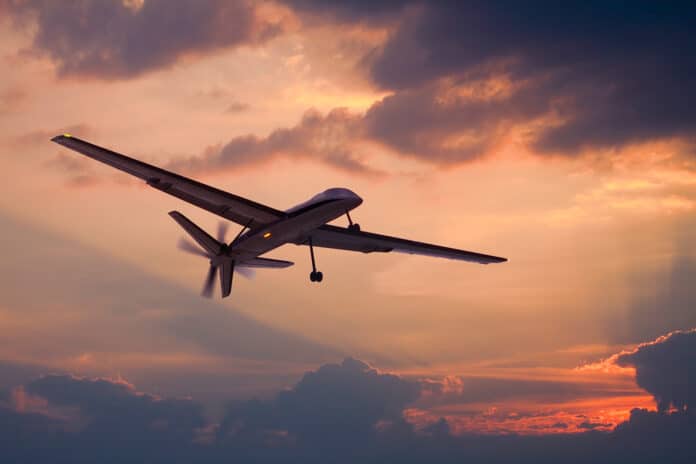Demand is expected to accelerate for autonomous air vehicles that transport people and goods, making wind sensors on these vehicles and in the space where they operate critical to ensure safe control of many simultaneous take-offs and landings.
Engineers from the Ohio State University have designed and successfully tested a more efficient wind sensor for use on drones, balloons, and other autonomous aircraft. Called anemometers, these wind sensors are used to monitor wind speed and direction. As demand for autonomous aircraft increases, better wind sensors are needed to make it easier for these vehicles to both sense weather changes and perform safer take-offs and landings, according to researchers.
Conventional anemometers can be expensive to make, consume high amounts of energy and have a high aerodynamic drag; therefore many types are ill-suited for small aircraft. But the Ohio State team’s anemometer is lightweight, low-energy, low-drag, and more sensitive to changes in pressure than conventional types.
The new device was fabricated from smart materials – matter with properties that can be controlled, enabling them to sense and react to their environment. The team used an electric polymer called polyvinylidene fluoride (PVDF), which is used extensively in architectural coatings and lithium-ion batteries. PVDF can be piezoelectric, which means that it produces electrical energy when pressure is applied to it, and this energy can be used to power the device. The measured voltage or change in capacitance of a piece of flexible PVDF film can be correlated to the wind speed.
The PVDF sensor is incorporated into an airfoil, similar to an airplane wing, which reduces aerodynamic drag. Because the airfoil is free to rotate like a wind vane, it can be used to measure the direction of the wind.
Researchers designed a two-pronged experiment to test how their device would fare once subjected to Earth’s atmosphere. First, the pressure sensor was tested in a sealed chamber to determine its sensitivity. Then, the sensor was incorporated into an airfoil and tested in a wind tunnel.
The results showed that the sensor measures both pressure and wind speed extremely well. A small digital magnetometer compass integrated into the airfoil provides precise wind direction data by measuring the absolute orientation of the airfoil relative to the Earth’s magnetic field.
More research needs to be done to move the wind sensor concept from a controlled research environment to commercial applications. As his team continues to work with PVDF and other advanced materials to improve sensor technology, researchers hope that their work will eventually lead to technology that can be used outside of aircraft, such as for wind turbines for clean, efficient, and readily available energy for the public.
“These are very advanced materials, and they can be used in many applications,” said Marcelo Dapino, co-author of the study. “We would like to build on those applications to bring compact wind energy generation to the home.”
